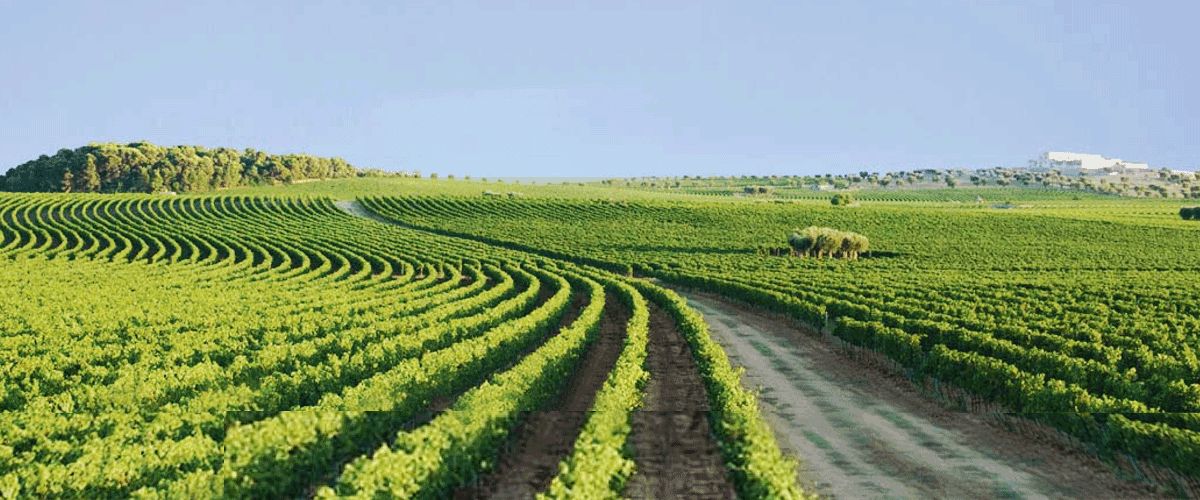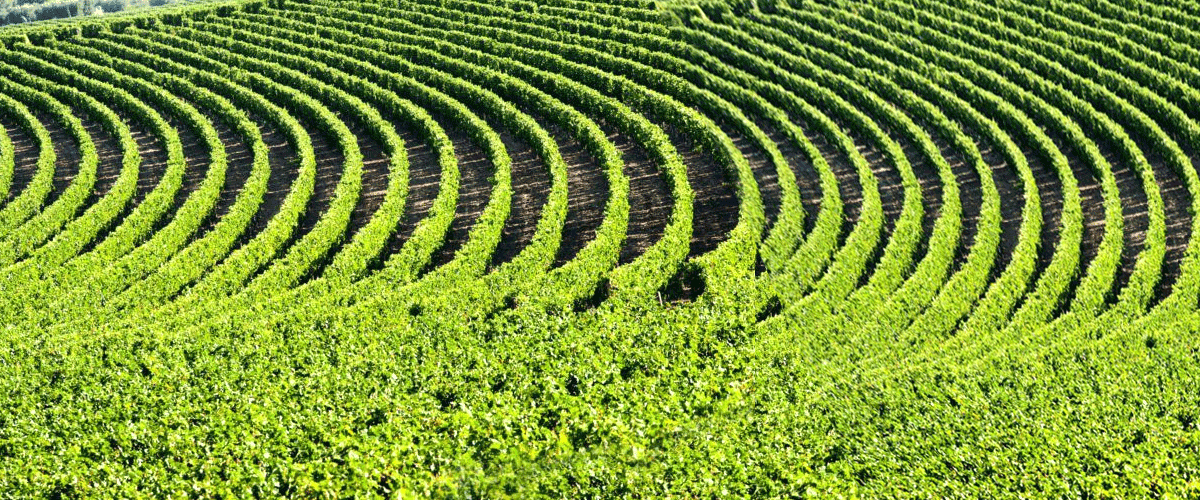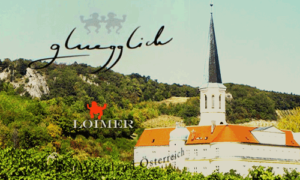Fernando Caruncho creates a spectacular wave of vineyards at Amastuola
Vineshapes
Landscape philosopher Fernando Caruncho plays with our perceptions in the Puglian vineyards of Masseria Amastuola. Our brain “learns” how a vineyard should look, square and immobile, yet Caruncho’s vine waves create a whole different motion.

In Puglia, Italy there is a -one of a kind- vineyard. It is part of Masseria Amastuola, a farm, and wine resort, located in the quiet, rural countryside of Crispiano. The Amastuola vineyard is perhaps the most prominent example of a landscaped vineyard in the world. When you go up the beautiful hill overlooking the Gulf of Taranto, the landscape gradually unfolds rows of spectacular, parallel green waves of vines. This sea of vines with a length of approximately 3 km is created by the famous Spanish landscape gardener Fernando Caruncho. Caruncho placed the vines in geometric patterns to accentuate the curved lines of the terrain at Masseria Amastuola. Caruncho calls the waves “waves of time that traverse this landscape since antiquity”.

Ancient footprint
In his design, Caruncho has approximated the ancient agricultural ways of the Taranto countryside. During excavations in the Crispiano area, archaeologists found signs of vines and olive cultivation, from olive and grape seeds to Greek wine amphorae. Nowadays, Masseria Amastuola uses the same classical footprint producing wine and other agricultural products. Moreover, this did not stay unnoticed. Amastuola received awards for its organic approach and good practices for the recovery of not productive agricultural landscapes and the enhancement of tourism.
Terra di Gravina Nature Park is characterized by an extremely varied flora and fauna, gorges, cave houses, crypts, and sanctuaries
The farm is part of the Regional Park “Terra Delle Gravine.” Terra Delle Gravine is an area of great biological diversity. It has beautiful vegetation, such as ‘fragno’, ilex, roach, hornbeam, maritime pines, rosemary, thyme, wild strawberry, blackberry, and a country rose called Calaprice. There are also olive trees, rocky areas, forests, meadows, marshes, wetlands, ancient gardens, and important: water.
Fernando Caruncho created a synthesis between light, geometry, time and nature at Amastuola
It is no wonder that the Giuseppe Montanaro family -who purchased Amastuola in 2003- choose Fernando Caruncho. Renowned internationally for his serene landscape and garden compositions mixing natural forms and the timeless principles of geometry, Fernando incorporates agricultural elements in the design of his gardens too. At Amastuola however, he designed for the first time an entirely agricultural landscape, as if it is a garden.

Minimalist landscape, an Italian vineyard with rolling waves
The Amastuola vineyard is striking by its designed allegiance between the curving lines of the slightly hilly landscape and the rows of vines. Most people are used to see vines in a strict grid, but here the opposite happens. It is certainly unexpected. Fernando’s waves of vines cause a pleasant visual shock as they capture the purity and simplicity of the curved beauty of the landscape. For Caruncho it is important to keep our relationship with nature at the centre of our experience. He does that by working with light. Using the effects of light to accentuate leaf colour and texture, but also walls and water. His starting point is the sky. Vertical features such as vines or trees lift your eyes up to the sky, allowing a warm contrast with the shadowy evergreen planting below.
24 groups of enormous antique olive trees
In addition to planting the vines, Caruncho also had the Amastuola workers move 1,500 enormous antique olive trees to place them in 24 groups. Positioned to guide you along the paths to the apex of the old stone Masseria. Like this, he creates a visual connection between the landscape and the old stone building on top of the hill. Relocating the trees – some more than 800 years old, with trunks over 2.5 m in diameter wide – took the best part of two years, as it was not easy to remove the deeply rooted trees. In Carucho’s thinking geometry expresses space, gives form, structures the light in the garden, and builds a new natural order in the landscape at well.

The grammar of the Amastuola landscape
It is the grammar of a redesigned landscape that defines the harmony between production and aesthetics. At Amastuola it serves both nature and the produce of the olive trees and vines. Amastuola organic wines are not only the result of an artisanal process based on tradition. Employing advanced technologies is also part of it. From start to finish, it is the evolving result of hard work and passion. Similar to a garden actually. A garden is always on one’s mind. A garden is never finished garden, you have to labour hard, and adapt to changing circumstances. Landscaping expresses what gardening, what vine growing, is really all about: working with nature.


